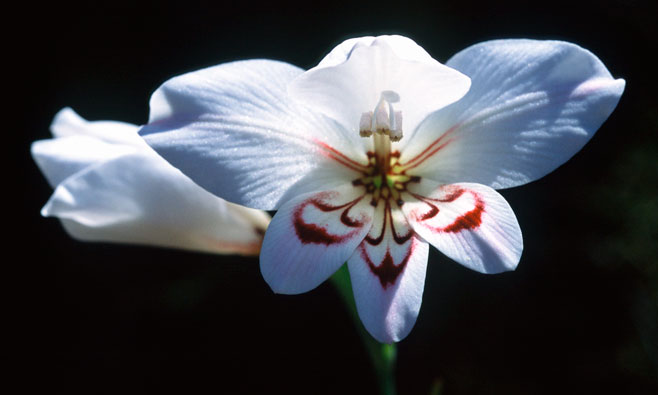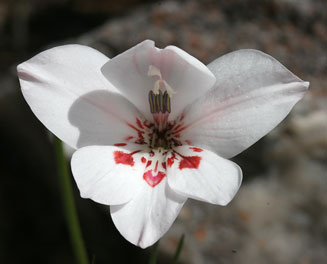|
Gladiolus debilis (Painted lady) Life
> eukaryotes >
Archaeoplastida >
Chloroplastida
>
Charophyta > Streptophytina > Plantae (land plants)
> Tracheophyta (vascular plants) > Euphyllophyta > Lignophyta (woody plants)
> Spermatophyta (seed plants) > Angiospermae (flowering
plants) > Monocotyledons > Order: Asparagales
> Family: Iridaceae > Genus:
Gladiolus
|
|
|
 |
|
|
|
|
|
Gladiolus debilis flowering in spring on
the Cape Peninsula, South Africa. [photo
Colin Paterson-Jones ©] |
|
|
|
|
|
 |
 |
|
|
|
|
|
Gladiolus debilis, Kogelberg Biosphere
Reserve, Kleinmond, Western Cape, South Africa. [photos
H.G.
Robertson, Iziko ©] |
|
|
Information from Goldblatt and Manning (1998).
Distribution and habitat
Endemic to the Western Cape, South Africa, where it occurs
from the Cape Peninsula to Bain's Kloof in the northeast, and to Bredasdorp in
the east. Plants grown in fynbos on rocky sandstone slopes. Flower mainly in the
first two to three years after a fire.
Life cycle
- A geophyte, with corms measuring 12-20 mm in diameter.
- Flowers from September to early October.
- Seeds are ovate, measuring 5-6 mm long by 4 mm broad, broadly and evenly
winged.
Ecological interactions
Pollinators
Flower colour and shape suggest pollination by long-tongued
flies but there are no observations to support this.
Derivation of name
debilis means dainty, referring to the delicate
flowers.
Publications
- Goldblatt P. and Manning J. 1998. Gladiolus in Southern Africa.
Fernwood Press, Vlaeberg, Cape Town.
Text by Hamish Robertson |
